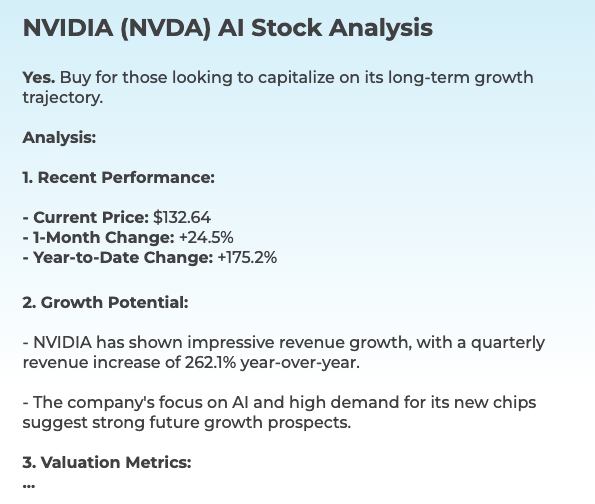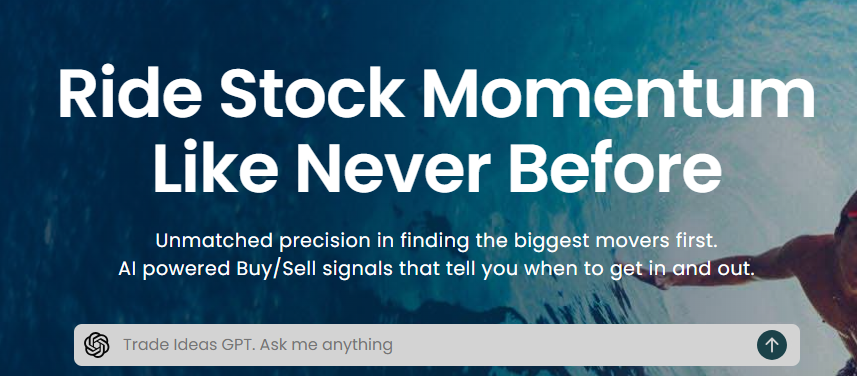When looking at AI trading platforms that forecast or analyze markets, market coverage is a key aspect to think about. It determines which assets and markets are accessible. A platform that has comprehensive market coverage will allow you to diversify portfolios and explore opportunities for global trading and adapt to different strategies. Here are 10 suggestions to help you analyze the market coverage offered by these platforms.
1. Evaluate Supported Asset Classes
Stocks - Ensure that you have access to major stock exchanges such as NYSE and NASDAQ. Also, ensure that your platform offers small-caps and mid-caps.
ETFs - See if your platform supports an extensive range of ETFs offering exposure in a number of various sectors, regions, or themes.
Options and Futures: Determine if the platform supports derivatives such as options, futures and other products that leverage.
Forex and commodities: See if your platform offers Forex and commodities, precious metals and energy commodities.
Cryptocurrencies - Check to see whether your platform is compatible with major cryptocurrencies like Bitcoin, Ethereum and altcoins.
2. Check the Coverage Area
Global markets: Ensure that the platform has major markets in the world like North America, Europe and Asia-Pacific.
Regional focus: Verify whether the platform is focused on specific regions or markets that align with your business interests.
Local exchanges. Find out if the platform allows exchanges local or regional to your location.
3. Assessment Real-time against. delayed data
Real-time data - Ensure that the platform provides real-time market information that will aid you in making quick decisions, particularly for traders who are active.
Delayed data - Check whether delayed data is available for free or is available at a reduced price. This might be enough for investors looking to invest over the long term.
Latency of data. Verify whether the platform reduces the delay for feeds of information that are real-time particularly in the case of high-frequency trading.
4. Review the Historical Data available
Historical depth: Make sure that the platform can provide comprehensive historical data (e.g. more than 10 years of data) for analysis and backtesting.
Examine the precision in historical data.
Corporate actions: Verify that historical data takes into consideration stock splits (if appropriate), dividends and other corporate action.
5. Check for Market Depth and Order Book Information
Platform should provide Level 2 Data (order-book depth) to improve price discovery and execution.
Verify the bid-ask ranges in order to make sure you are getting the most accurate price.
Volume data: Ensure that the platform provides specific volume data that can be used to evaluate market liquidity.
6. Review the coverage of Indices and Sectors
Major indices: Ensure that your platform supports major indices like the S&P 500 (e.g. NASDAQ 100 or FTSE 100), for index-based benchmarking.
Data from specific sectors for focused analysis, determine if the platform has data for certain sectors (e.g. health care, technology).
Customized indexes. Determine if your platform allows you to create and track custom indexes based on the criteria that you define.
7. Integrate Sentiment and News Data
News feeds : Ensure you have a platform that integrates live news feeds. Ideally, they should come from reliable media outlets (e.g. Bloomberg and Reuters) to cover the most important market occasions.
Check the sentiment analysis tool on the platform using information from news, social media or any other source.
Events-driven Strategies: Determine if the platform supports strategies that are triggered by events (e.g. economic reports and earnings announcements).
8. Check for Multi-Market Trading Capabilities
Trading in cross-markets: The system will allow trading on different asset classes or markets using a single user interface.
Currency conversion: Verify that the platform supports multicurrency accounts and currency conversions to facilitate international trading.
Time zone support: Check if the platform accommodates trading in different time zones that are used for trading on global markets.
9. Assess Coverage of Alternative Data Sources
Alternative data - Check to determine if there are other data sources that are integrated into the platform (e.g. web traffic, satellite imagery or transactions with credit cards). This will provide you unique insight.
ESG data - Check that the platform offers environmental, governance, and social information (ESG). This is essential for a an investment that is socially conscious.
Macroeconomic data: Check that the platform provides macroeconomic indicators for fundamental analysis (e.g. GDP, inflation rates, rate of interest).
Review Feedback from Customers and Market Reputation
User reviews: Study user feedback to gauge the platform's market coverage and reliability.
Find out about the platform's industry standing and reputation. This includes recognition and awards from experts in the industry.
Case studies and testimonials They will showcase the platform's performance in certain market segments or asset classes.
Bonus Tips
Trial period: You may use an demo, trial or a free trial to check the market coverage and data quality.
API access: Ensure that the API on the platform permits you to programmatically access market data for a custom analysis.
Customer Support: Make sure that the platform is able assist with any data-related or market-related issues.
By using these tips using these tips, you will be able to accurately assess the coverage of AI analysis and stock prediction platforms. Then, you can select a trading platform that offers you the markets and the necessary information to be successful in your trades. A broad market coverage will allow you to diversify your portfolio and discover your portfolio. It also allows you to adapt to market changes. Have a look at the best investment ai for site recommendations including chart ai trading assistant, ai investing, ai for trading, incite, AI stock market, ai for trading, AI stock market, using ai to trade stocks, ai investing app, ai trade and more.

Top 10 Tips For Evaluating The Feasibility And Trial Of Ai Stock Predicting/Analyzing Trading Platforms
Analyzing the trial and flexibility options of AI-driven stock prediction and trading platforms is essential in order to determine if they can meet your needs before committing to a long-term contract. Here are 10 suggestions for evaluating these aspects.
1. Get the Free Trial
Tip: Check if the platform provides a free trial period to test the features and performance.
Why: You can test the platform without cost.
2. Duration and Limitations of the Trial
Tips: Evaluate the length of the trial, as well as any limitations (e.g. limited features and data access limitations).
The reason: Knowing the constraints of a trial can help you decide if it offers a complete evaluation.
3. No-Credit-Card Trials
You can find free trials by searching for trials that don't require you to give the details of your credit card.
Why: This reduces the risk of unanticipated charges and makes it easier to opt out.
4. Flexible Subscription Plans
Tips: Determine whether the platform has flexible subscription plans (e.g., monthly, quarterly, or annual) with distinct pricing levels.
Why: Flexible plans give you the option to select a level of commitment that is suited to your requirements and budget.
5. Customizable Features
See if you can customize features like alerts or risk levels.
The reason: Customization allows the platform to meet your trading objectives.
6. Simple Cancellation
Tips - Find out the ease it takes to upgrade or unsubscribe from an existing subscription.
Why: An easy cancellation process will ensure that you are not stuck with a plan you don't like.
7. Money-Back Guarantee
Look for platforms offering 30-day money-back assurance.
Why: You have an extra security net in case you don't like the platform.
8. All features are accessible during the trial
Tips: Make sure the trial provides access to all core features and not just a limited version.
The reason: Trying out the full features can help you make an informed decision.
9. Customer Support during Trial
Examine the quality of customer service offered in the free trial period.
Why is it important to have dependable support so you can resolve issues and get the most value of your trial.
10. Post-Trial Feedback Mechanism
Tip: Check whether the platform is seeking feedback following the trial to improve their services.
Why is that a platform that valuess the input of users is more likely to grow and meet the user's needs.
Bonus Tip Tips for Scalability Options
You must ensure that the platform can scale with your needs, offering greater-level plans or features as your trading activity grows.
After carefully evaluating the test and flexibility features after carefully evaluating the trial and flexibility features, you'll be able to make an informed decision about whether AI stock predictions and trading platforms are suitable for your business before committing any amount of money. Have a look at the best ai trading tool examples for website examples including free AI stock picker, ai software stocks, invest ai, AI stock predictions, trading ai tool, AI stock prediction, best ai trading platform, free ai tool for stock market india, ai software stocks, ai in stock market and more.
